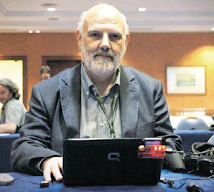
The Reserve Bank of India - which aims to keep inflation below 5 percent - is due to meet on Jan. 29 to review rates. It has raised its benchmark interest rate nine times since October 2004 in order to keep a tight rein on prices and as a result has succeeded in dragging down inflation from a two-year high of 13.1% reached in January 2007.
The Reserve Bank is expected to come under pressure after the U.S. Federal Reserve cut the target overnight lending rate on Jan. 22 by three quarters of a percentage point to 3.5 percent. The Fed rate cut widened the spread between two-year Indian government bonds and similar maturity U.S. Treasury notes to 5.40 percentage points from 5.01 percentage points a week earlier. Finance Minister Palaniappan Chidambaram noted in Davos yesterday that the unexpected cut in the U.S. interest rates may increase capital flows to India and the central bank would have to respond appropriately to tackle inflows.
Pressure may also mount on the Rupee, which rose 12.3 percent in 2007, leading it to appreciate further on higher overseas inflows as investors try to take advantage of high-yielding emerging market assets. The rupee has gained 0.2 percent after the Federal Reserve cut its key interest rate to the lowest since 2005.













